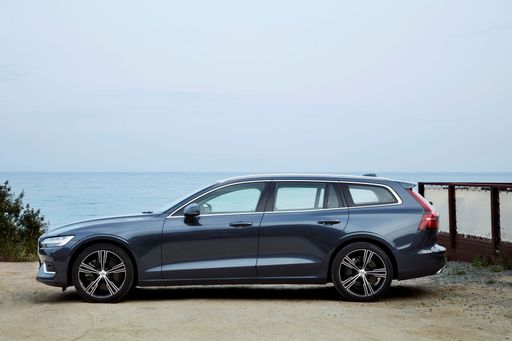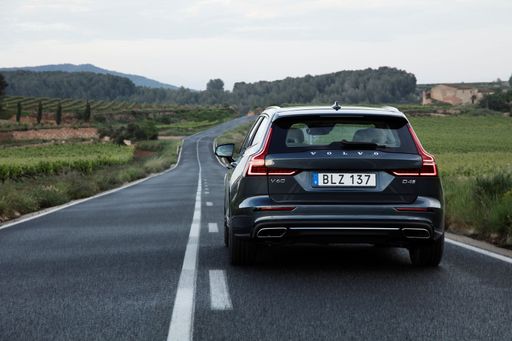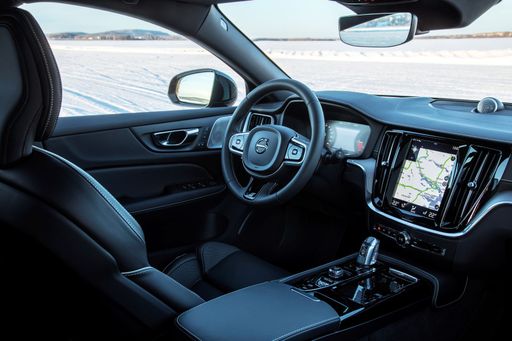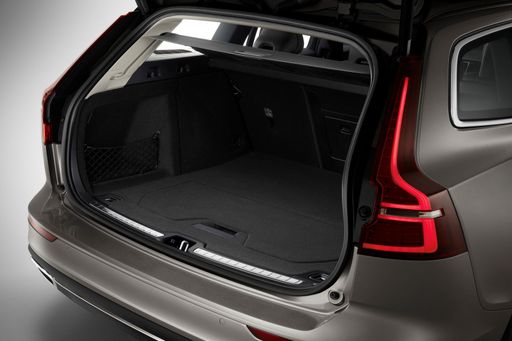Alfa Romeo Junior vs Volvo V60 – Differences & prices compared
Everyday use, family trips or long-distance drives – here’s where the differences show.
Discover whether Alfa Romeo Junior or Volvo V60 fits your lifestyle better.
Costs and Efficiency:
Price and efficiency are key factors when choosing a car – and this is often where the real differences emerge.
Alfa Romeo Junior has a convincingly advantage in terms of price – it starts at 25700 £, while the Volvo V60 costs 41600 £. That’s a price difference of around 15977 £.
Fuel consumption also shows a difference: Volvo V60 manages with 2.40 L and is therefore decisively more efficient than the Alfa Romeo Junior with 4.80 L. The difference is about 2.40 L per 100 km.
As for range, the Alfa Romeo Junior performs decisively better – achieving up to 410 km, about 318 km more than the Volvo V60.
Engine and Performance:
Power, torque and acceleration say a lot about how a car feels on the road. This is where you see which model delivers more driving dynamics.
When it comes to engine power, the Volvo V60 has a noticeable edge – offering 455 HP compared to 280 HP. That’s roughly 175 HP more horsepower.
In acceleration from 0 to 100 km/h, the Volvo V60 is noticeable quicker – completing the sprint in 4.60 s, while the Alfa Romeo Junior takes 5.90 s. That’s about 1.30 s faster.
In terms of top speed, the Alfa Romeo Junior performs somewhat better – reaching 206 km/h, while the Volvo V60 tops out at 180 km/h. The difference is around 26 km/h.
There’s also a difference in torque: Volvo V60 pulls convincingly stronger with 709 Nm compared to 345 Nm. That’s about 364 Nm difference.
Space and Everyday Use:
Cabin size, boot volume and payload all play a role in everyday practicality. Here, comfort and flexibility make the difference.
Both vehicles offer seating for 5 people.
In curb weight, Alfa Romeo Junior is distinct lighter – 1380 kg compared to 1734 kg. The difference is around 354 kg.
In terms of boot space, the Volvo V60 offers noticeable more room – 519 L compared to 415 L. That’s a difference of about 104 L.
In maximum load capacity, the Volvo V60 performs slightly better – up to 1431 L, which is about 151 L more than the Alfa Romeo Junior.
When it comes to payload, Volvo V60 to a small extent takes the win – 506 kg compared to 420 kg. That’s a difference of about 86 kg.
Who comes out on top?
Overall, the Volvo V60 shows itself to be wins the duel decisively and secures the title of DriveDuel Champion.
It convinces with the more balanced overall package and proves to be the more versatile choice for everyday use.
 @ Volvo Cars
@ Volvo Cars
Volvo V60
Alfa Romeo Junior
The Alfa Romeo Junior captures the essence of Italian design with its sleek lines and compact dimensions, making it an icon of elegance and performance. With a spirited driving experience and a charming retro aesthetic, it appeals to enthusiasts and casual drivers alike. This delightful car embodies the brand's rich heritage while remaining a fun and engaging option for those seeking a unique automotive experience.
details @ Alfa Romeo / Stellantis Media
@ Alfa Romeo / Stellantis Media
 @ Alfa Romeo / Stellantis Media
@ Alfa Romeo / Stellantis Media
 @ Alfa Romeo / Stellantis Media
@ Alfa Romeo / Stellantis Media
Volvo V60
The Volvo V60 exudes a sense of refined elegance with its sleek design and smooth contours, making it a standout in the estate car category. Inside, it offers a harmonious blend of luxury and functionality with premium materials and state-of-the-art technology, ensuring a comfortable driving experience. Its performance on the road is impressive, combining efficient handling with a powerful yet quiet ride, making it a favourite for those who appreciate both style and substance.
details @ Volvo Cars
@ Volvo Cars
 @ Volvo Cars
@ Volvo Cars
 @ Volvo Cars
@ Volvo Cars
 @ Volvo Cars
@ Volvo Cars
 @ Volvo Cars
@ Volvo Cars
 @ Alfa Romeo / Stellantis Media
@ Alfa Romeo / Stellantis Media
|
 @ Volvo Cars
@ Volvo Cars
|
|
|
|
Costs and Consumption |
|
|---|---|
|
Price
25700 - 41600 £
|
Price
41600 - 64200 £
|
|
Consumption L/100km
4.8 - 5.4 L
|
Consumption L/100km
2.4 - 6.2 L
|
|
Consumption kWh/100km
15.1 - 17.5 kWh
|
Consumption kWh/100km
-
|
|
Electric Range
344 - 410 km
|
Electric Range
92 km
|
|
Battery Capacity
0.4 - 51 kWh
|
Battery Capacity
14.70 kWh
|
|
co2
0 - 119 g/km
|
co2
54 - 140 g/km
|
|
Fuel tank capacity
44 - 45 L
|
Fuel tank capacity
60 L
|
Dimensions and Body |
|
|---|---|
|
Body Type
SUV
|
Body Type
Estate
|
|
Seats
5
|
Seats
5
|
|
Doors
5
|
Doors
5
|
|
Curb weight
1380 - 1689 kg
|
Curb weight
1734 - 2064 kg
|
|
Trunk capacity
340 - 415 L
|
Trunk capacity
519 L
|
|
Length
4173 mm
|
Length
4778 mm
|
|
Width
1781 mm
|
Width
1850 mm
|
|
Height
1505 - 1538 mm
|
Height
1432 mm
|
|
Max trunk capacity
1205 - 1280 L
|
Max trunk capacity
1431 L
|
|
Payload
390 - 420 kg
|
Payload
466 - 506 kg
|
Engine and Performance |
|
|---|---|
|
Engine Type
Electric, Petrol MHEV
|
Engine Type
Petrol MHEV, Plugin Hybrid
|
|
Transmission
Automatic
|
Transmission
Automatic
|
|
Transmission Detail
Dual-Clutch Automatic, Reduction Gearbox
|
Transmission Detail
Dual-Clutch Automatic, Automatic Gearbox
|
|
Drive Type
Front-Wheel Drive, All-Wheel Drive
|
Drive Type
Front-Wheel Drive, All-Wheel Drive
|
|
Power HP
136 - 280 HP
|
Power HP
197 - 455 HP
|
|
Acceleration 0-100km/h
5.9 - 9.1 s
|
Acceleration 0-100km/h
4.6 - 7.6 s
|
|
Max Speed
150 - 206 km/h
|
Max Speed
180 km/h
|
|
Torque
230 - 345 Nm
|
Torque
300 - 709 Nm
|
|
Number of Cylinders
3
|
Number of Cylinders
4
|
|
Power kW
100 - 207 kW
|
Power kW
145 - 335 kW
|
|
Engine capacity
1199 cm3
|
Engine capacity
1969 cm3
|
General |
|
|---|---|
|
Model Year
2024 - 2025
|
Model Year
2024 - 2025
|
|
CO2 Efficiency Class
A, C, D
|
CO2 Efficiency Class
E, B
|
|
Brand
Alfa Romeo
|
Brand
Volvo
|
What drive types are available for the Alfa Romeo Junior?
Available configurations include Front-Wheel Drive or All-Wheel Drive.
The prices and data displayed are estimates based on German list prices and may vary by country. This information is not legally binding.
